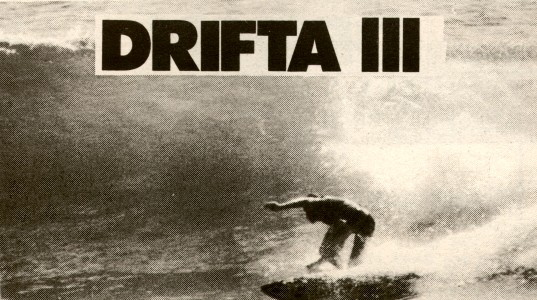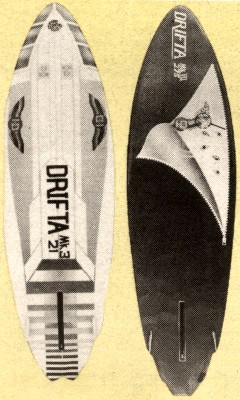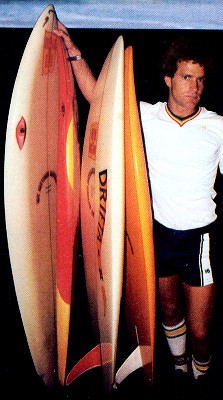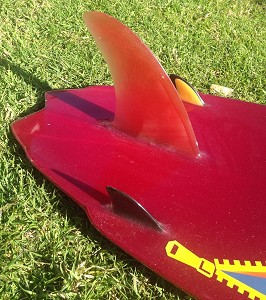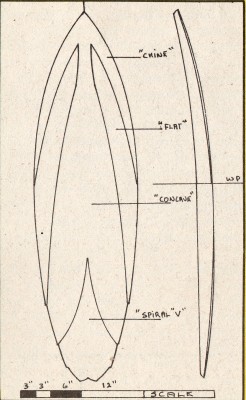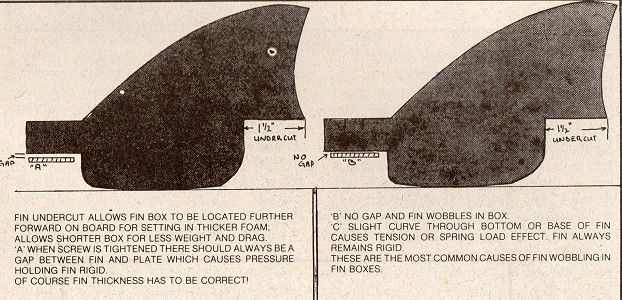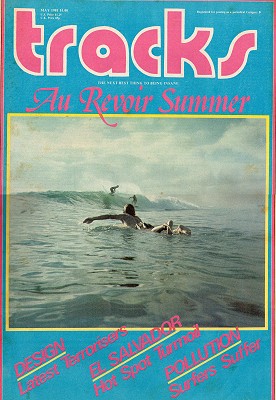 |
surfresearch.com.au
fitzgerald : the
drifta - hocker : concaves and fin boxes, 1981
|
Australian Unorthodox : The Religion of Oz Design
Tracks
May 1981 Number 128 page 17.
| Terry
Fitzgerald: Drifita III |
Rod Hocker: Concaves -They're Functional | Rod Hocker: Fin Boxes- Fine Tuning Surfboards |
Design article detailing Fitzgerald's development of the Drifta Mark III up to February 1981, with small rail fins and a large centre fin in a fin-box.
Note that the Drifta Mk III rail fins are flat on the outside and foiled on the inside, reversing the common design.
